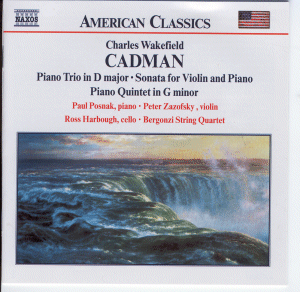 Composer: Gloria Coates
Composer: Gloria Coates
Works: String Quartet No. 1 (1966), String Quartet No. 5 (1988), String Quartet No. 6 (1999)
Performers: Kreutzer Quartet
Recording: St. John’s Church, Loughton, Essex, September 2000
Label: NAXOS 8.559091
Gloria Coates, born in 1943, emerges as a distinctive voice in contemporary classical music, particularly through her innovative string quartets. This recording presents three pivotal works from her oeuvre, illustrating her evolution as a composer and her unique musical language. Coates’s quartets engage with complex textures and avant-garde techniques, challenging both performers and listeners alike. The historical context of these works is vital; composed during an era rich with experimentation and the exploration of new sonic landscapes, they reflect the tension between the avant-garde and the evolving traditions of classical music.
The Kreutzer Quartet’s performance of Coates’s String Quartet No. 1 is a compelling introduction to her style. The work opens with a strikingly aggressive cello solo, utilizing Bartók pizzicato and tremolandi that immediately establish an intense, atonal atmosphere. The quartet’s execution here is precise, navigating the intricate passages with a commendable blend of aggression and sensitivity. The canonic structures that Coates weaves into the texture are subtly articulated, lending an architectural strength to the piece despite its brevity. The engineering captures the rawness of the cello’s sound, allowing its timbral nuances to resonate effectively within the acoustic of St. John’s Church.
In contrast, the String Quartet No. 5 stretches over thirty minutes and unfolds in three movements titled “Through Time,” “Through Space,” and “In the Fifth Dimension.” The Kreutzer Quartet adeptly navigates the expansive soundscapes, especially in the first movement, which evokes the ethereal qualities reminiscent of Ligeti’s “Ramifications.” The overlapping harmonics create a sense of suspension, while the underlying cantus firmus offers a grounding element. The performance is marked by a meticulous attention to detail, particularly in the second movement, where glissandi form intricate clusters and swirl within a tightly controlled framework. Gann’s observation about the careful notation of glissandi is evident; the players maintain clarity amidst the complexity, enabling the music’s fractal-like quality to emerge vividly.
Coates’s String Quartet No. 6 is perhaps the most introspective of the three. The opening movement, despite its title “Still,” is anything but tranquil, featuring an aggressive snap that gives way to a slow transformation through microtonal dissonances. The Kreutzer Quartet’s interpretation here strikes a balance between aggression and meditative stillness, particularly as they navigate the metamorphosis leading to the resolution on an E minor chord. The following movement, “Meditation,” showcases the ensemble’s ability to execute the precisely notated glissandi, underscoring the spiritual dimension Gann describes. However, the final movement, “Evanescence,” feels somewhat repetitive, echoing the first movement without introducing significant new material. It is a moment that, while technically adept, lacks the creative spark found in the earlier sections.
The recording quality is exemplary, capturing the dynamic range of the quartet and the resonant acoustics of the church. Each instrument is well-defined, allowing the intricate interplay between voices to be clearly discerned. This clarity is essential in Coates’s music, where the interplay of glissandi and microtones can easily blur if not properly balanced. The production choices serve the music well, enhancing its spectral qualities without compromising the overall coherence of the performance.
Gloria Coates is indeed an intriguing figure in contemporary music, and this recording serves as an important entry point into her world. The Kreutzer Quartet’s performances are both technically accomplished and interpretatively insightful, offering listeners a chance to engage deeply with Coates’s unique sound language. The combination of her compositional rigor and the quartet’s dedication renders this disc a valuable contribution to the catalog of modern string quartets, inviting further exploration of a composer whose voice deserves more attention in the broader classical discourse.



